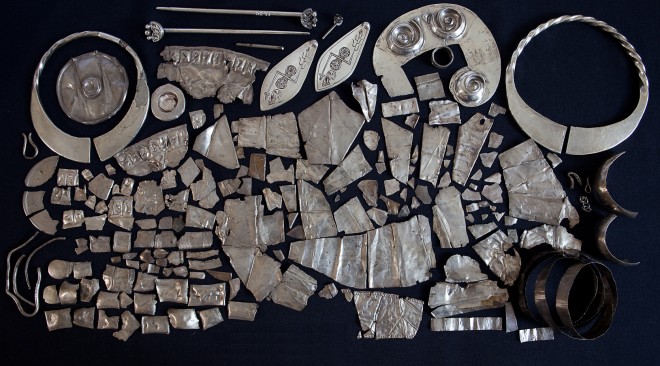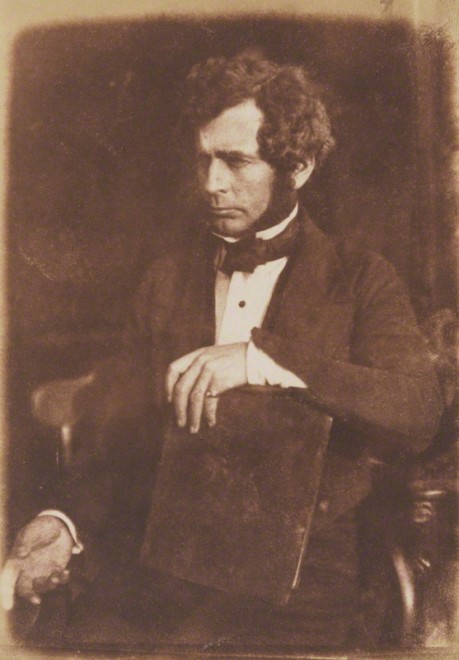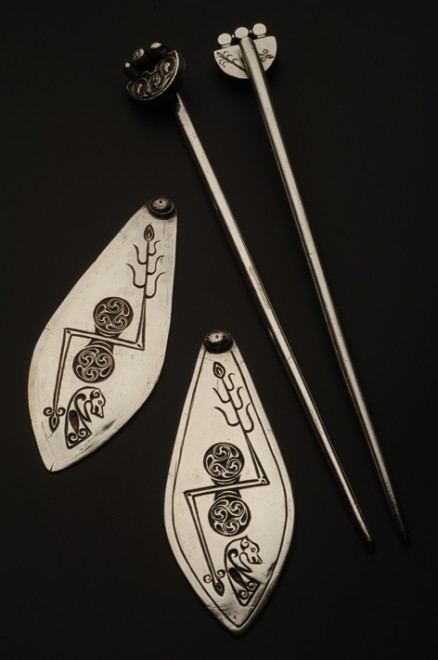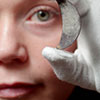Fakes and forgeries – Pictish silver, cutting edge science and some good old fashioned detective work.
Occasionally, the fruits of research take everyone by surprise, and this was certainly the case with our work on the Norrie’s Law hoard. This collection of silver is one of the most significant archaeological survivals from early Medieval Scotland. But detective work in the archives combined with scientific analysis of the silver objects, undertaken as part of the Glenmorangie Research Project, began to suggest that all was not quite as it seemed…

The murky story behind one of Scotland’s most important archaeological discoveries
In 1819 the largest hoard of Pictish silver ever to be found was unearthed near a small mound in Fife known as ‘Norrie’s Law’. So much about the discovery of the silver is shrouded in mystery – we don’t know the name of the finder, but we do know he illegally sold most of the artefacts and that they were melted down by silversmiths. By the time the landowner, General Durham, heard tell of the discovery, the majority of the hoard was lost. But luckily he did manage to salvage some 170 pieces of silver, now held in the collections of National Museums Scotland. Although General Durham had saved an important part of the hoard he kept the whole discovery secret; it did not become widely known until 20 years later when, in 1839, a local Fife journalist and antiquarian began to try to reconstruct what had occurred and to bring the hoard to wider public attention. This man, George Buist, is a key source in the curious case of the Norrie’s Law silver and his evidence provides compelling reasons to question the authenticity of several of the key objects.

Early medieval silver
The Norrie’s Law hoard is a very unusual and important survival. It is made up of a mixture of whole objects, and fragments of silver that have been hacked up ready to be recycled. The hoard contains several totally unique finds, including a pair of silver plaques decorated with Pictish symbols – enigmatic designs found on early Medieval sculpture from northern and eastern Scotland. Also unique is the fact that there are two other pairs of virtually identical objects: a pair of pins (called handpins because of their resemblance to a clenched fist) and a pair of large twisted brooch hoops. Our work on the hoard revealed that these pairs of objects are each made up of a worn original and a direct copy. This led us to ask, when were these copies made – in the early Medieval period or more recently?

An archaeological whodunnit
We set about trying to answer this question by looking at as many different types of evidence as possible. In the end, it was a combination of good old fashioned detective work in the archives and scientific analysis that won the day.
Our analysis began to shed doubts on the authenticity of two of the unworn cast copies: one of the handpins and one of the plaques. These two objects are totally unlike the rest of the hoard in terms of their silver composition. Additionally, while the rest of the hoard in common with other antique silver contains trace levels of impurities, the copied plaque and pin appear to be composed of refined silver which contains very few trace elements. This suggested the staggering possibility that they are made from relatively modern silver because until quite recently it was not possible to remove the tiny traces of elements like Bismuth. But could this really be the case? And if so, how on earth did these two copies become mixed up within the hoard of early Medieval silver?

We found several crucial pieces of evidence amongst the archives. Fife newspaper man George Buist was trying in 1839 to reconstruct the circumstances of the discovery of the Norrie’s Law silver. He became convinced that more of the silver could be recovered if the discovery was more widely known. In the days before the widespread use of photography, one way to achieve this was to make copies of some of the silver objects in order to show them at meetings of local societies and other interested people. George Buist decided to do just this in order to, according to his published report, help elucidate ‘other facts, or [aid] the recovery of other fragments of these extraordinary relics’. The original Pictish silver was still in the possession of the landowner General Durham, who lent Buist a selection so that he could commission a jeweller to make copies. We tracked these 1839 copies down to the collections of the St Andrews Museum who kindly lent them to us for analysis that demonstrated that they are made from pewter. Records tell us that they were made by a silversmith from Cupar, a Mr Robert Robertson, who was paid the sum of £1.

It appears that George Buist’s plan worked – as a result of his enquiries and the creation of the pewter copies, his report tells us that a second silver plaque and pin were rescued. Crucially, because of his illustrations, we can be sure that the plaque and pin that Buist ‘rescued’ are also the plaque and pin that our scientific analysis suggested were suspicious. Clearly, Buist thought he was rescuing two Pictish objects from someone who would have melted them down. We think however that he was misled and instead given recently made silver copies instead.
The plot thickens
Buist did not name the culprit, the person from whom he rescued these two objects. But we know that Robert Robertson, the maker of Buist’s legitimate pewter copies, was also one of the jewellers who had illegally bought portions of the silver hoard as bullion and melted it down. We also know that Robertson must have had moulds of the plaque and pin in his possession, from which he had (legitimately) made the pewter copies; these could also have been used to cast silver forgeries. In addition, Robertson’s pewter copy of the handpin and the fake silver version both carry a feature not found on the original artefact, thus linking Robertson to the forgery. This feature known as a ‘z-rod’ is a part of a Pictish symbol. This has always stood out as strange – no other objects or sculpture feature a z-rod without the rest of the symbol. We cannot be sure quite why he added this innovation, but interestingly it bears more than a passing resemblance to Robertson’s own maker’s mark. Perhaps this was his way of subtly signing the two pieces?

While we can demonstrate that Robert Robertson had the means and method for making the silver fakes, we can only speculate as to a potential motive: guilt at having melted down part of the hoard, or to support his account that more plaques and pins had been part of the original discovery perhaps. Both might have been attempts to salvage his reputation given he had in effect been guilty in 1819 of buying silver which should have been declared as Treasure Trove.
The conclusion
Buist was sufficiently convinced that he had recovered genuine material from the hoard that he made no further distinction between the two silver plaques and two silver handpins. In this he has been followed by virtually all scholars who have ever commented on the hoard. However, cutting edge science combined with good old-fashioned detective work in the archives seems to suggest a very different story. While two of the objects from the hoard are unlikely to be genuine, it does not diminish the importance of the rest of the material for understanding early Medieval Scotland. Work on the hoard continues in order to piece together the fragments and understand what they can tell us about the use of silver in the first millennium AD. Both the quantity of silver and the range of influences represented amongst the genuine objects speak volumes about the wealth and connections available to early Medieval Scotland. More surprises undoubtedly lie within the rest of the silver but we expect these all to be early Medieval surprises!

This research was undertaken by Alice Blackwell and Martin Goldberg, Scottish History and Archaeology, and Susy Kirk, formerly of the Conservation and Analytical Science Department, National Museums Scotland. We are indebted to St Andrews Museum for the loan of their 1839 facsimiles of the Norrie’s Law hoard.
The Glenmorangie Research Project aims to extend and enhance our understanding of Scotland’s Early Medieval past. The current phase of research, Scotland’s Earliest Silver: power, prestige and politics will look at the biography of this precious metal as it was used and reused in Early Medieval Scotland
Scotland’s Early Silver exhibition is on at the National Museum of Scotland until 25 February 2018 and follows three years of research supported by The Glenmorangie Company.

